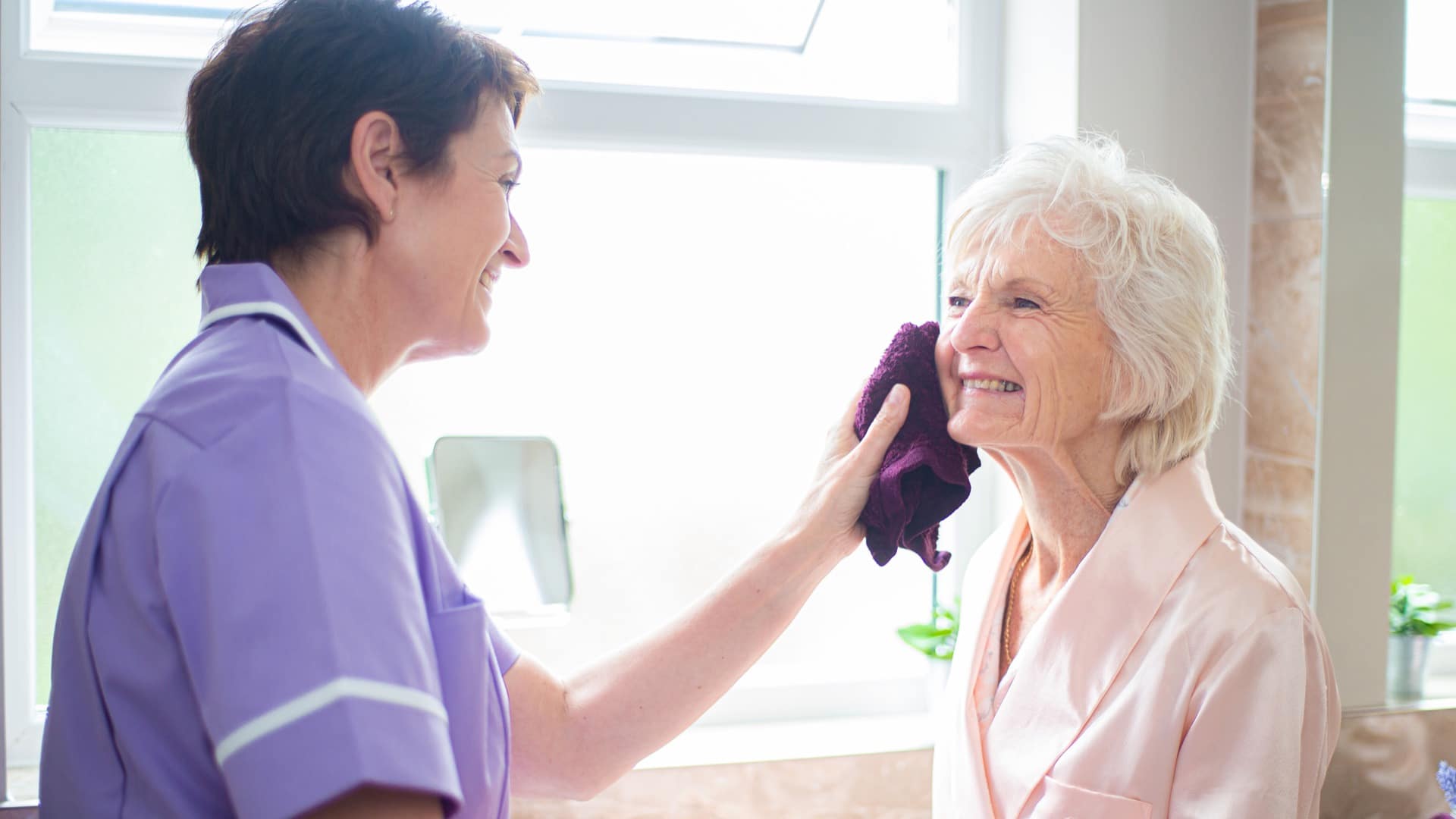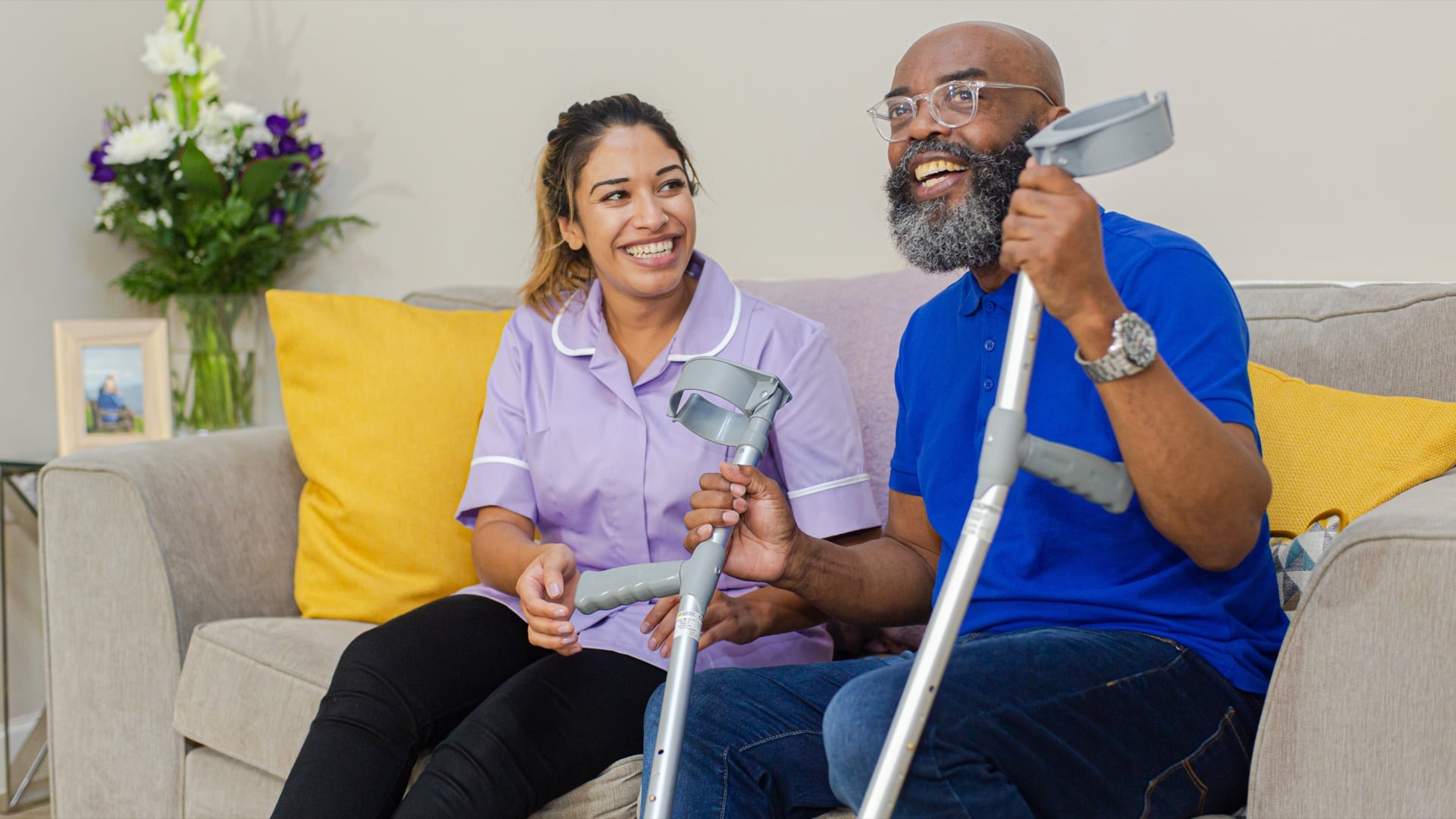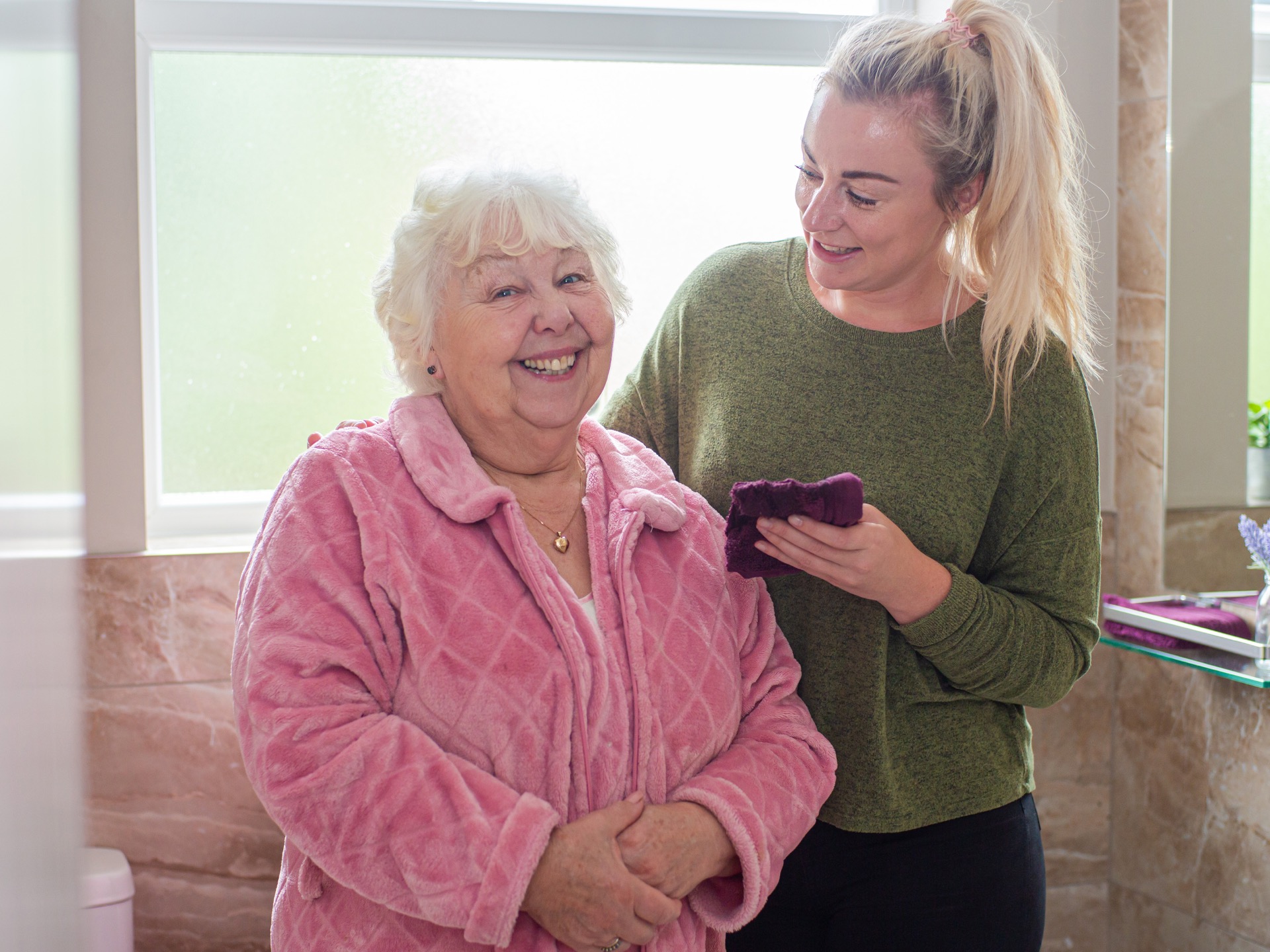Elderly catheter care tailored for you

Why urinary catheters are used
A urinary catheter is used to help people who need assistance urinating naturally.
The NHS tells us that a urinary catheter “is usually used when people have difficulty peeing (urinating) naturally. It can also be used to empty the bladder before or after surgery and to help perform certain tests.”
There are several different types of catheter that can be used, depending on an individual and their own circumstances, and while some catheters are changed every day, others are left in longer-term.


What is a urinary catheter?
If a person has a condition that prevents the bladder from being emptied in the traditional way, a urinary catheter can be utilised. This is a flexible tube that is inserted into the bladder either through the urethra, or through an opening made in the lower abdomen. This allows urine to be drained from the bladder as often as necessary.
Different types of urinary catheters
There are a number of different types of urinary catheters available, with each serving a different purpose. You can find out more about each type of urinary catheter below:
Intermittent urinary catheter
An intermittent urinary catheter is inserted into the bladder via the urethra and used to drain urine, either directly into the toilet or into a sealed bag. This will be done several times a day, whenever the person needs to pass urine, and a new intermittent catheter will be used every time. The sterile catheter tube will be pre-lubricated so that insertion is as comfortable as possible and will usually be inserted by the person themselves.
Indwelling urinary catheter (Foley catheter)
Just as an intermittent catheter does, an indwelling catheter drains urine via the urethra, however it is left in place for several days or weeks at a time. It remains in the bladder by means of a water-filled balloon that should prevent it from falling out, and the tube is connected to a bag that can be strapped to the leg or placed on a floor stand. These bags often have a tap at the bottom for easy drainage into the toilet or commode. Larger capacity bags can also be used for overnight.
Suprapubic urinary catheter
Unlike an intermittent or indwelling catheter, the suprapubic catheter is not inserted into the bladder via the urethra, rather through a surgical cut in the abdomen. This is done under anaesthetic. A suprapubic catheter is likely to be used when the urethra is damaged, or if the person isn’t able to make use of an intermittent catheter. A drainable bag can be used just as with an indwelling catheter to make emptying easier at a convenient time. A suprapubic catheter will usually remain in place for several weeks, depending on the person’s circumstances.
Condom urinary catheter
A condom catheter, or sheath urinary catheter, is an external catheter that is similar to a condom yet has a tube at the end that can be attached to a urine bag. The sheath is self-adhesive and is rolled onto the penis so that when urine is excreted it will pass through the tube and into the bag, which is strapped to the inside of the leg. This type of catheter will need to be replaced every 24 hours, or more often if it becomes unstuck.
Potential risks of using catheters
Urinary tract infections can be more common in people who have a urinary catheter long-term and can also increase risk of blockages.
Urinary tract infections can be more common in people who have a urinary catheter long-term and can also increase risk of blockages. Problems can also occur if the person doesn’t drink enough fluids or eat a varied diet. Bladder spasms can also be experienced, which are caused by the bladder trying to squeeze out the balloon. These can sometimes be treated with medication.
Leakages are also not uncommon, especially with indwelling catheters, although condom catheters can become unstuck unnoticed and subsequently leak. This can be dangerous if caused by a blockage so should be regularly checked. Leakages can also lead to the skin becoming irritated and be incredibly uncomfortable. Any signs of blood in the catheter or urine should also be brought to the attention of a medical professional as it could signify an infection, or worse. According to the NHS, other less common problems of catheter use include:
Injury to the urethra
Possible injury to the urethra when the urinary catheter is inserted
Narrowing of the urethra
Narrowing of the urethra because of scar tissue caused by repeated catheter use
Injury to the bladder
Injury to the bladder caused by incorrectly inserting the urinary catheter
Bladder stones
Use of a catheter can often lead to the formation of bladder stones
When to call for support
If anything out of the ordinary is noticed with catheter use it should be brought to the attention of a medical professional immediately. This could be blood in the urine, fever symptoms, or pain. The NHS tell us that urinary tract infections can be more common with catheter use and if not treated effectively can move into the blood stream and lead to serious health issues. If in doubt while supporting someone with a catheter, seek advice via the GP, community nurse, or 111.


Catheter care led by trained nurses
Helping Hands has been offering complex continence care since we were founded in 1989. Our team of clinical nurses lead packages of support for people who are living with a range of continence needs, including bladder retraining, incontinence aids, management of indwelling urethral catheters and supra-pubic catheters, plus support with exercises that strengthen the pelvic floor. Our nursing team are all directly employed by us, we don’t use agency staff, and they’ll ensure your carer has all the necessary skills to manage your incontinence needs effectively.
What does our care include?
Our nurse-led continence care is designed to help people manage bowel or bladder problems as easily as possible.
Every aspect of your care and support needs are covered by us, from initial assessment with you or your nominated individual, through to commencement of care and ongoing support. We also provide regular checks on our carers and provide opportunities for them to increase their knowledge, while offering mandatory training in all the areas necessary to support you. We only select the most able and experienced carers to deliver our more complex packages, so you and your loved ones can be confident that you’ll always be supported to the very highest standards.

How we care for a catheter customer
Whether you require a single daily visit to help you empty your catheter bag or you require your carer to live in your home around the clock, you can be confident that we’ll always be there when you need us. Our care teams across the UK support thousands of people to remain living in their own homes, from the east of England to the westernmost tip of Wales.
We’ll devise a package of care for you based on your daily preferences and how you like to live your life, always putting you at the centre of your care and focusing on keeping you as independent as possible in the home you love.
Catheter Care FAQs
-
What does catheter care mean?
-
Catheter care means that we’ll fully support every aspect of your continence needs, while also ensuring that your any other aspect of your routine is taken care of. We focus solely on your requirements and how we can support you, always treating you as an individual and living by the mantra that ‘one size doesn’t fit all’. Your needs will be assessed, your carer experienced in catheter care, and their references and background checks thorough, so that you and your loved ones know they are suitable to be inside your home. Your lifestyle proceeding as you want it to is why we’re there, and we’ll always do everything to ensure you get to live comfortably and as independently as possible.
-
What is included with catheter care?
-
Not only do our carers offer superb catheter and other practical care in your own home, they quickly become a friend who ensures your emotional wellbeing is also taken care of. By offering a ‘whole-person’ approach to the care we deliver, Helping Hands ensures that every aspect of your holistic needs are given equal importance. This means that they won’t just complete their ‘to-do list’ of practical tasks, they’ll also ensure that you are supported emotionally and have the companionship you need. And because our care is regulated by the Care Quality Commission and Care Inspectorate Wales, you can have the highest confidence in us to deliver exactly what we promise to.
-
How do I arrange catheter care?
-
By getting in touch with our friendly customer care team, you and your loved ones can have all of your questions around catheter care answered, and reassurances given that you’ll be able to remain living in the home you love. They’ll then arrange for your local manager to come to your home and explain your options in more detail. Alternatively, you may prefer to have a chat with a member of the care team in your local branch, and you can discover which is your closest here.